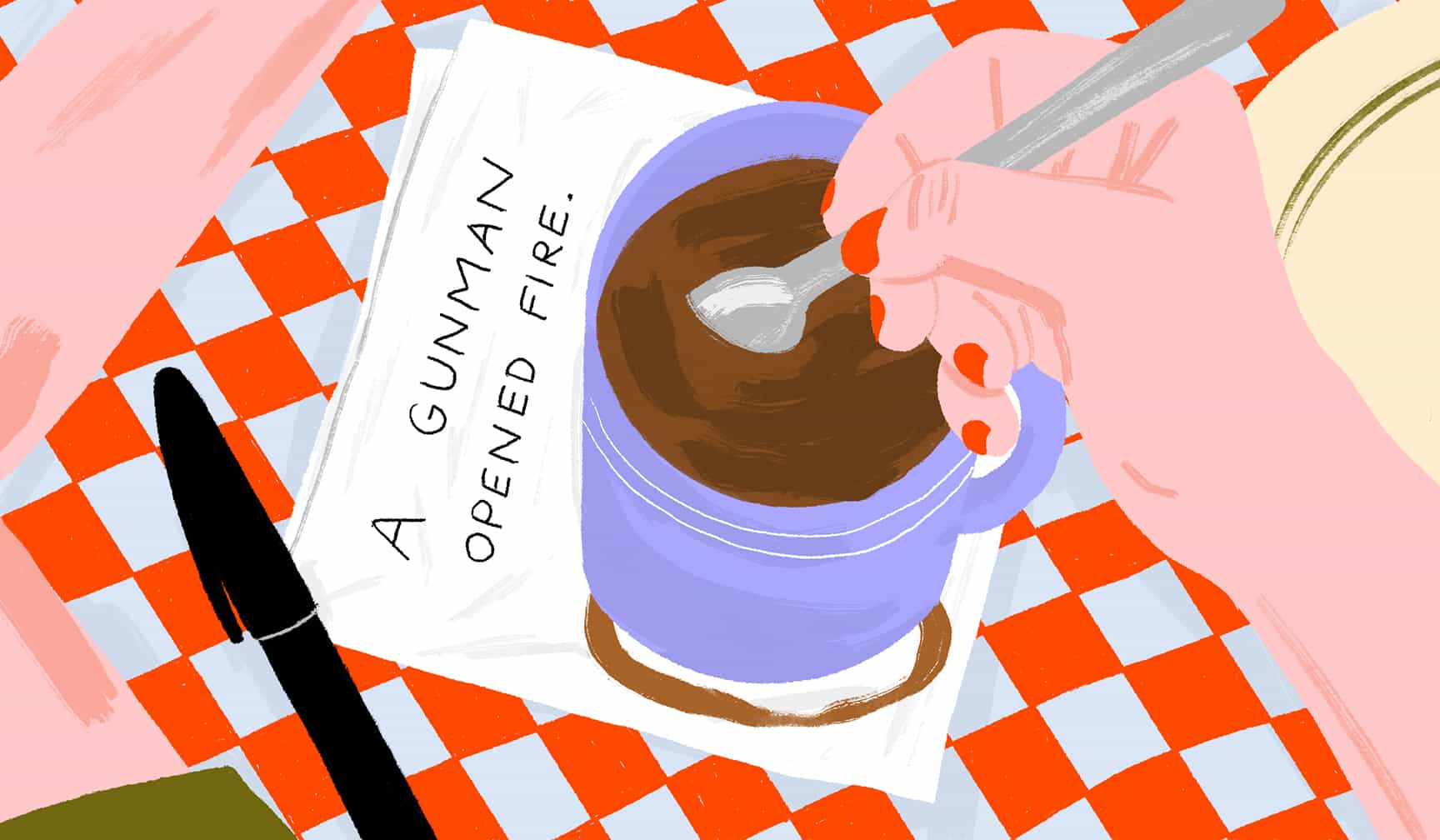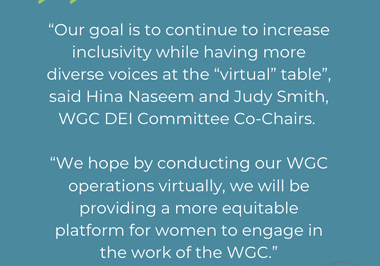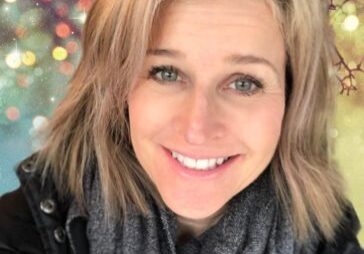How to raise children in a world of lockdown drills
STORY BY Krista Threefoot ILLUSTRATION BY Paige Vickers
According to literary legend, Ernest Hemingway once bet a group of friends 10 dollars each that he could pen an entire novel in six words. On a restaurant napkin, he wrote: “For sale: Baby shoes, never worn.”
Ernest Hemingway won his bet, and his six-word novel became the forerunner of flash fiction and 140-character social commentary. Now, decades later, we don’t need even six words to write the story of our society. It only takes four: A gunman opened fire.
A gunman opened fire. In an elementary school. In a high school. In a movie theater. At a concert. In another high school, and another, and another. In our own mall, just a long walk away from my home.
The story of an angry individual with a grudge against humanity and an oversized sense of entitlement killing innocent people in a matter of moments is the narrative that shapes our children’s world. It’s terrifying, heartbreaking, and for parents, it’s one of the greatest challenges we face in raising our kids.
When I became a mom, I knew there would be minefields I’d have to navigate. I knew I’d have to guide them through sleepless nights, toddler tantrums, friendship triangles, academic anxieties, puberty, puppy love…The Talk.
What I didn’t know was that the toughest “Talk” I’d have with them wouldn’t be about how babies are made, but about lockdown drills and what to do if we encounter a dangerous person in a public place.
I didn’t know that everywhere I took them I’d be scanning our surroundings for exits and hiding places, or that every time I dropped them off at school, I’d wonder if that moment would be my last goodbye.
And although I expected to spend the rest of my life worrying about my children, I never expected that my fear would be overshadowed by anger.
I was angry when, five years ago, my now 10-year-old came home from kindergarten talking about how they practiced what to do if a bad guy ever came into their classroom. I was angry when, last year, my first-grader told me she was too scared to be the caboose of the line because if a bad guy wanted to kill someone, she’d be the easiest to reach.
I’m angry that there are millions of parents like me grappling with the question of how to prepare their children for a world where going to school isn’t always safe.
This topic of conversation is one my friends and I revisit regularly. Despite hundreds of texts and playground chats, we still struggle to determine how best to talk to our children about the dangers they may face.
One thing we all acknowledge is that we can’t protect our children by ignoring the threats. We’ve also come to recognize how important it is to understand our children, their anxieties and how they cope. When we know how our kids’ brains work, we can give them the tools they need to feel in control of their safety.
For some kids, this means citing statistics—you have a greater chance of winning the lottery than getting shot at school. Mathematically, our children are more likely to be safe than otherwise.
But for other kids, that line of reasoning doesn’t work. For them, it may be more helpful to have a plan, both for prevention and for response. The Sandy Hook Promise foundation created the Know the Signs program, which teaches parents and educators how to work with students to help them identify—and report—warning signals for violence or suicidal thoughts among their peers.
We can also encourage our children to participate in concrete tasks, like writing letters to our officials requesting that more funding, research and support be given to mental health services and programs that build community among student populations.
Talking to school administrators about the lockdown process and school emergency procedures is also enormously helpful. It gives you specific details about safety precautions, which you can share with your children.
And although these are skills I never hoped to have to develop, it can also be beneficial to participate in an active shooter training program, through the ALICE institute or a local Krav Maga studio. Training can help adults create both a plan and a sense of security; mitigating our own fears helps our children mitigate their fears as well.
I wish I could end with more answers—but like all the parents of my generation, I never imagined I’d be raising my kids in a society where school shootings happen so regularly.
All I can say is this: If I could write a six word novel about our era’s social narrative, I’d write: Gunmen opened fire. Mothers fought back.
Krista Threefoot lives in Columbia with her husband, two daughters and a rescue dog. She blogs at andanotherthinghon.com.






